
| Parasitic interactions: Parasitoids |
| Hymenoptera, Ichneumonoidea |
|
The superfamily Ichneumonoidea is one of the largest groups of parasitic Hymenoptera. Two famlies are minimally recognized (the Ichneumonidae and the Braconidae), although some authors recognize up to six families. They are, on average, larger than other parasitic forms. With only a few exceptions ichneumonids are parasitoids of insects. Most ichneumonids attack the immature stages of endopterygotes, but the Braconidae has a wider host range. Braconids rarely are hyperparasitic (i.e., their larvae are parasitoids of other parasitoid species), while several groups of Ichneumonidae are obligatory or facultative hyperparasites. Source: Gauld, I. & B. Bolton, eds. 1988. The Hymenoptera, p. 193 - 217. The site Genera Ichneumonorum Nearcticae, hosted by The American Entomological Institute, is dedicated to the Ichneumonidae. |
| Braconidae |
| Bracon spec. | Glyptomorpha pectoralis |
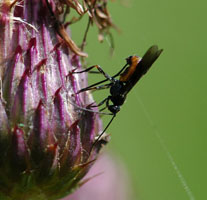
|
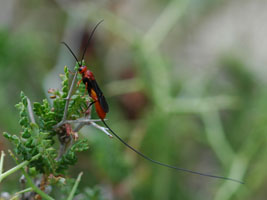
|
| Ichneumonidae |
| Anomalon cruentatum | Ichneumon cf. confusor |
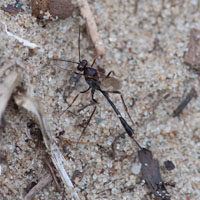
|
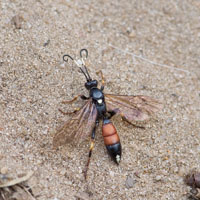
|
| Ichneumon sarcitorius | ||
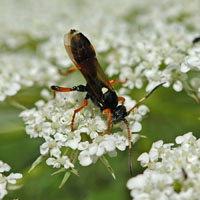
|
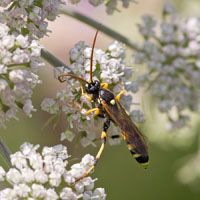
|
|
| Female and male. | ||
| Excavarus apiarius | Craesus septentrionalis |
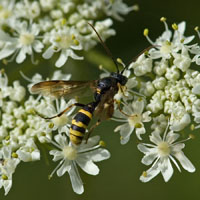
|
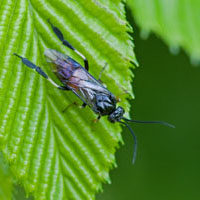
|
| Excavarus apiarius is a parasitoid of the Symphytan wasp Craesus septentrionalis. | |
| Dolichomitus cf. mesocentrus | |
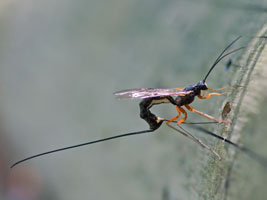
|
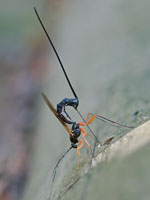
|
|
Most Dolichomitus species are ectoparasitoids of xylophagous beetle larvae, usually Cerambycidae. |
|
| Gelis spec. | Metopius cf. dentatus |
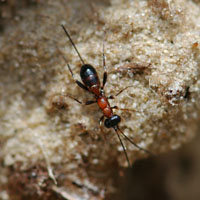
|
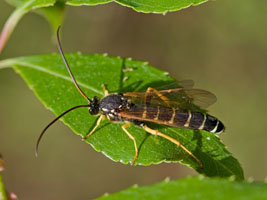
|
| Ant mimicking wingless female. |
| Rhyssa persuasoria | |
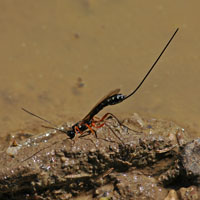
|
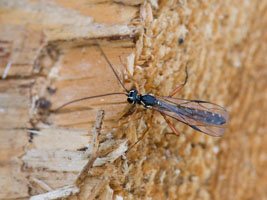
|
|
Female and male. Idiobiont ectoparasitoid of the immature stages of insects boring in wood, such as Wood wasps and Longhorn beetles (Cerambycidae). Idiobionts prevent further development of the host after paralizing it. |
|
| Stenarella domator | Osmia bicornis | |
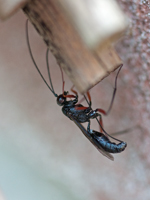
|
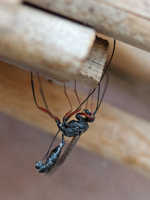
|
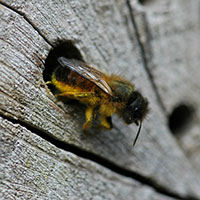
|
| Female ovipositing in nest of the mason bee, Osmia bicornis (=O. rufa). | ||